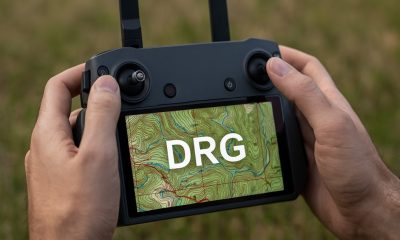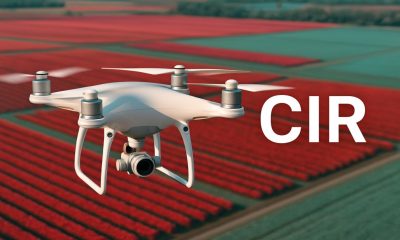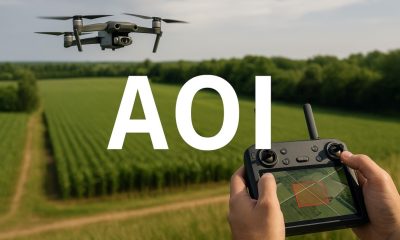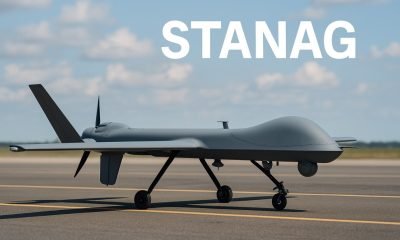- Acronym Guide
- AAM
- ABS
- AC
- ACAS
- ADS-B
- AFAC
- AGL
- AI
- AIM
- ALS
- AM
- AMA
- ANSP
- AOI
- APPI
- AUV
- AUVSI
- ARPAS-UK
- ASTM
- ATC
- BVLOS
- CAA
- CAAC
- CAB
- CASA
- CATT
- CBO
- CBR
- CBRN
- CDMA
- CDR
- CFR
- CIR
- COA
- COMINT
- CORS
- COTP
- COTR
- CPTED
- CV
- C2
- DAA
- DEM
- DFI
- DFS
- DGCA
- DHS
- DOD
- DPA
- DPEs
- DRG
- DRO
- DSM
- DSMX
- DSP
- DSSS
- DTM
- EASA
- EFT
- EO
- EOD
- EO/IR
- ELINT
- EMI
- ESC
- EVLOS
- eVTOLs
- FAA
- FCC
- FCS
- FHSS
- FICCI
- FLIR
- FOB
- FOV
- FPS
- FPV
- GBDAA
- GCP
- GCS
- GDPR
- GML
- GNSS
- GPS
- GSD
- GVC
- HDR
- HOGE
- IACRA
- ICAO
- ICS
- IMU
- INS
- IR
- ISA
- ISR
- ITU
- JARUS
- LAAMS
- LAANC
- LAATM
- LAI
- LBA
- LIDAR
- LOS
- LSALT
- MAC
- MAVLink
- MLIT
- MMS
- MSL
- MTOM
- NDAA
- NCSL
- NFZ
- NIST
- NMEA
- NOTAM
- NPA
- NPRM
- NTIA
- OBIA
- OEM
- OFDM
- OOP
- PASM
- PAV
- PCV
- PdM
- PEC
- PIC
- PID
- PIPL
- PLD
- PM
- PN
- PPK
- PPS
- PSM
- PWM
- UAM
- UAOP
- UAS
- UASTM
- UAV
- UCAVs
- UHD
- UHF
- USV
- UTM
- RAIM
- RCC
- RCS
- RFI
- ReOC
- RePL
- RMS
- ROI
- RPAS
- RPC
- RTH
- RTK
- SaR
- SAR
- SARP
- SBAS
- S.Bus
- SBIR
- SEDENA
- SfM
- SFOC
- SIGINT
- SLAM
- SMS
- SORA
- STANAG
- STTR
- sUAS
- TCAS
- TCCA
- TFR
- TIN
- TOF
- TP
- TPS
- TSA
- VHF
- VLOS
- VTOL
Drone Acronyms
What is MAVLink (Micro Air Vehicle Link)?
By
Jacob StonerTable Of Contents
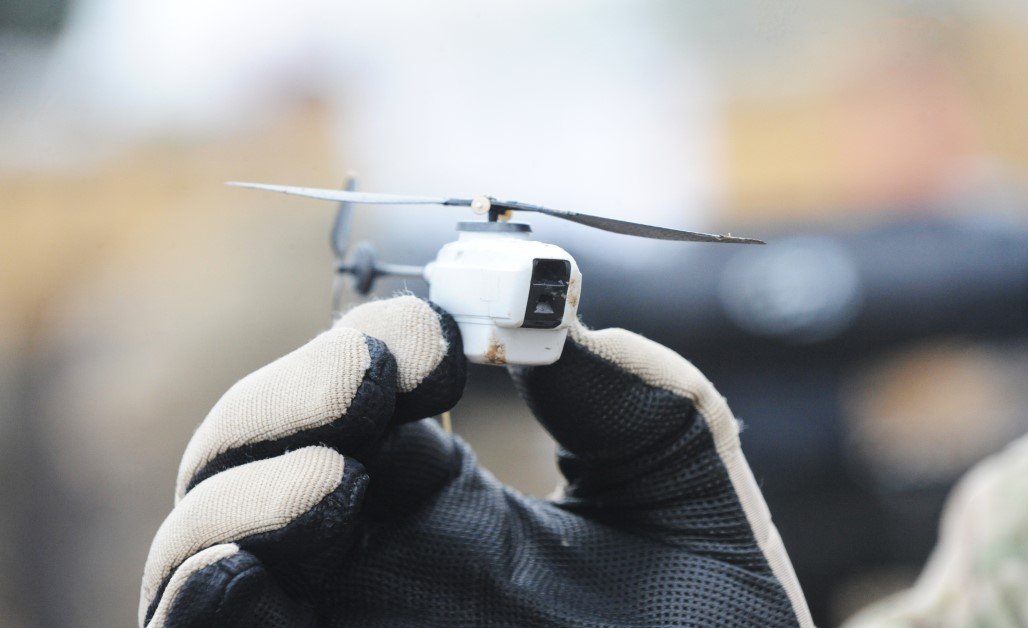
Definition
MAVLink, which stands for Micro Air Vehicle Link, is a lightweight, open-source communication protocol used for transmitting data between unmanned aerial vehicles (UAVs), such as drones, and ground control systems. Developed to support both micro air vehicles and larger UAVs, MAVLink enables the exchange of telemetry data, command instructions, and status updates between the drone and its control station.
Usage
MAVLink is widely used in the drone industry for real-time communication and control, particularly in systems that rely on autopilots, such as ArduPilot and PX4. The protocol allows UAVs to send critical information—such as position, speed, altitude, battery level, and sensor data—back to the ground control station. Operators can also use MAVLink to send commands to the UAV for navigation, flight mode changes, or even specific tasks like takeoff, landing, and waypoint navigation.
Relevance to the Industry
MAVLink is popular among drone developers and operators because of its flexibility, lightweight design, and compatibility with various hardware and software platforms. Its open-source nature allows for customization, making it ideal for hobbyists, researchers, and commercial operators who need a reliable and adaptable communication protocol for their UAV systems. MAVLink is also scalable, which means it can be used in both small consumer drones and larger commercial or military UAVs.
How Does MAVLink (Micro Air Vehicle Link) Work?
Message Structure and Data Transmission:
- Packet-Based Communication:
- Lightweight Data Packets: MAVLink operates by transmitting data in small packets, which contain essential information such as the message type, payload, sequence number, and checksum. Each packet is lightweight, typically less than 20 bytes, allowing for efficient and fast communication. This design is particularly beneficial for real-time telemetry and control, as it minimizes the amount of data transmitted, reducing latency and conserving bandwidth.
- Message Headers and Payloads: Each MAVLink packet begins with a header that includes the message ID, which specifies the type of data being transmitted (e.g., position, velocity, attitude). The payload section contains the actual data, such as GPS coordinates or battery status. The checksum at the end ensures data integrity by detecting errors during transmission.
- Serial and UDP Communication:
- Flexible Transmission Modes: MAVLink supports multiple communication modes, including serial communication (over UART or USB) and network-based communication using UDP (User Datagram Protocol). Serial communication is commonly used for direct connections between the UAV and ground control station, while UDP enables MAVLink to operate over Wi-Fi or other network connections, allowing for greater range and flexibility.
- Bidirectional Data Flow: MAVLink facilitates bidirectional communication, meaning that both the UAV and the ground control station can send and receive data. This allows the UAV to transmit telemetry data continuously while also receiving commands from the operator, enabling real-time control and monitoring.
Communication Between UAV and Ground Control:
- Telemetry Data Transmission:
- Real-Time Data Streaming: MAVLink streams telemetry data, including information about the UAV’s position, speed, altitude, orientation, battery status, and sensor readings, to the ground control station. This data is updated in real-time, allowing operators to monitor the UAV’s status and make adjustments as needed.
- Heartbeat Messages: MAVLink utilizes heartbeat messages, which are transmitted at regular intervals to maintain an active connection between the UAV and the ground control station. Heartbeats provide status updates and allow the system to detect if the connection is lost, enabling failsafe actions like returning to home or landing.
- Command and Control Functions:
- Sending Commands: Operators can use MAVLink to send specific commands to the UAV, such as changing flight modes, adjusting speed or altitude, and executing maneuvers like takeoff, landing, or hovering. MAVLink supports predefined command sets, which can be tailored to specific missions and applications.
- Mission Management and Waypoint Navigation: MAVLink enables operators to plan and upload missions to the UAV, specifying waypoints and actions to be performed at each waypoint. Once uploaded, the UAV can autonomously follow the mission plan, with MAVLink providing real-time updates on mission progress.
Protocol Flexibility and Customization:
- Open-Source Framework:
- Community-Driven Development: As an open-source protocol, MAVLink is supported by a large community of developers who contribute to its ongoing improvement. Users can customize MAVLink to fit their specific requirements, such as adding new message types or adapting the protocol to work with specialized sensors or hardware.
- Integration with Multiple Systems: MAVLink is compatible with popular autopilot systems like ArduPilot and PX4, as well as various ground control software, such as Mission Planner and QGroundControl. This flexibility allows users to select and integrate the hardware and software that best suit their operational needs.
- Customizable Message Sets:
- Extending the Protocol: MAVLink allows for the creation of custom message sets, which can be used to support additional features or sensors not covered by the standard protocol. This extensibility makes MAVLink suitable for a wide range of applications, from simple hobbyist drones to complex commercial and research UAVs.
- Parameter Tuning and Data Logging: MAVLink supports parameter tuning, which allows operators to adjust flight characteristics, such as PID (Proportional-Integral-Derivative) settings, during flight. Data logging features enable operators to record flight data for post-flight analysis, helping to optimize UAV performance and diagnose issues.
Security and Error Handling:
- Checksum-Based Error Detection:
- Data Integrity: MAVLink includes a checksum in each packet, which verifies that the data has not been altered or corrupted during transmission. If a checksum error is detected, the packet is discarded, preventing the transmission of erroneous data and ensuring that only accurate information is processed.
- Minimizing Data Loss: MAVLink’s small packet size and efficient error handling help to minimize data loss and ensure that critical control commands and telemetry data are reliably delivered. This is essential for maintaining safe and effective UAV operations, especially in mission-critical applications.
- Security and Authentication (in MAVLink 2.0):
- Enhanced Security Features: MAVLink 2.0, the updated version of the protocol, includes optional features like message signing, which adds a layer of security by authenticating messages. This feature helps prevent unauthorized access and ensures that only trusted ground control stations can communicate with the UAV.
- Backward Compatibility: MAVLink 2.0 is backward-compatible with the original MAVLink protocol, allowing users to upgrade their systems without losing compatibility with existing equipment.
By providing a lightweight, reliable, and customizable framework for UAV telemetry and control, MAVLink enables a broad range of drone operations, from hobbyist applications to complex commercial and research missions. Its open-source nature and flexibility make it a widely adopted choice for UAV communication worldwide.
Example in Use
“The ground control station used MAVLink to communicate with the drone, receiving real-time telemetry data and issuing navigation commands throughout the flight.”
Frequently Asked Questions about MAVLink (Micro Air Vehicle Link)
1. What are the main features of MAVLink?
Answer: Micro Air Vehicle Link offers features such as:
- Telemetry Transmission: Real-time data on position, speed, altitude, battery life, and sensor readings from the UAV to the ground control station.
- Command and Control: Supports sending commands for navigation, mode changes, and mission management from the control station to the UAV.
- Compatibility: Works with multiple autopilot systems and ground control software, providing flexibility across different UAV platforms.
2. How does MAVLink benefit drone operations?
Answer: Micro Air Vehicle Link benefits drone operations by:
- Providing Reliable Communication: Its lightweight, efficient protocol ensures low-latency data exchange, crucial for real-time monitoring and control.
- Supporting Customization: As an open-source protocol, it allows developers to tailor its features to meet specific mission requirements and integrate with other systems.
- Enabling Autonomous Missions: MAVLink supports pre-programmed missions, allowing UAVs to execute tasks like waypoint navigation and automated landings without constant manual input.
3. What are common applications of MAVLink?
Answer: Common applications of Micro Air Vehicle Link include:
- Commercial and Research UAVs: Used for autonomous flight control and data collection in mapping, surveying, and scientific research.
- Drone Hobbyists: Provides a user-friendly way for enthusiasts to experiment with flight modes, telemetry, and custom commands.
- Military and Industrial Drones: Employed for secure, reliable communication in high-stakes environments where real-time data transmission is essential.
For examples of these acronyms visit our Industries page.
As the CEO of Flyeye.io, Jacob Stoner spearheads the company's operations with his extensive expertise in the drone industry. He is a licensed commercial drone operator in Canada, where he frequently conducts drone inspections. Jacob is a highly respected figure within his local drone community, where he indulges his passion for videography during his leisure time. Above all, Jacob's keen interest lies in the potential societal impact of drone technology advancements.




